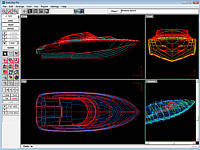

In addition, the hydrodynamic viscous damping terms are always subject to significant uncertainties and sometimes become critical for accurate vessel motion predictions. However, parameters related to the onboard vessel loading condition can be difficult to measure directly, such as the center of gravity and moments of inertia. Reducing the uncertainties of the onboard vessel loading condition can therefore improve the accuracy of vessel motion prediction and hence improve the safety and cost-efficiency for marine operations. The operational limiting criteria can usually be calculated by applying presumed linearized vessel motion transfer functions based on the specified vessel loading condition, which may deviate from the real vessel condition when the operation is executed. Wave-induced vessel motion prediction plays a critical role in ensuring safe marine operations. The study results and their significance are presented and discussed as well. In this paper we present the analysis procedure, the evaluation criteria, and the mooring system’s design.

The favorable results indicate that the basin enables most cargo handling operations under waves conditions of Hmo = 2.5 m, and minimal downtime of less than 6% of the year. The system is evaluated in terms of acceptable motion of the ship and permissible load on the mooring system. It consists of a time-domain simulation of a tanker, berthed via nonlinear mooring system along the Delta’s side hull under severe wave conditions typical to the East Mediterranean Sea. Relying on potential flow theory and applying the boundary element method, we conducted a nonlinear hydrodynamic analysis of a moored vessel at the basin. This study examines the basin in terms of its operability as a service port. Its year-round operability as the gateway of the structure directly affects the Delta’s utilization. Formed, inherently, by the innovative geometry, the sheltered basin is a unique feature of the Delta. Designated for the open sea, the Delta is a new type of VLFS. Very large floating structure (VLFS) is an environmentally sensitive technology which creates artificial land at sea. In addition to academic test functions, SAMO-COBRA has been applied on a real-world ship design optimization problem with three objectives, two complex constraints, and five decision variables. In the second experiment, SAMO-COBRA outperforms the majority of competitors in terms of required function evaluations to achieve 95% of the maximum achievable Hypervolume. Terms of achieved Hypervolume (HV) after being given a fixed small evaluation budget on the majority of test functions. In the first experiment, SAMO-COBRA outperforms the other algorithms in SAMO-COBRA is compared to a wide set of other state-of-the-art algorithms (IC-SA-NSGA-II, SA-NSGA-II, NSGA-II, NSGA-III, CEGO, SMES-RBF) on 18 constrained multi-objective problems. This algorithm automatically determines the best Radial Basis Function-fit as surrogatesįor the objectives as well as the constraints, to find new feasible Pareto-optimal solutions. This paper proposes the Self-Adaptive algorithm for Multi-Objective Constrained Optimization by using Radial Basis Function Approximations, SAMO-COBRA. Better performance in rough sea for the ship designed with the proposed method is also reported. Comparing the proposed method with the traditional methods indicates that 7.89% increase in average ship speed is obtained, demonstrating that the proposed method is effective in designing better ships for actual sea states. Comparisons with traditional methods used in ship design are also presented. The decision variables are the ship and propeller main dimensions. The proposed approach is tested on a Post-Panamax container ship operating in the route from Busan to Hamburg port. The objective of the optimization is the average ship speed, averaged over all propulsion power and environmental condition combinations based on a long-term analysis. This article proposes a method for optimization of the design of a ship with respect to different levels of propulsive power and different operational conditions using a probabilistic approach. Following the significant correlations between environment and ship behavior at sea, efforts are needed to design energy-efficient and safe ships with good performances in realistic sea conditions. However, a ship experiences different speeds and sea conditions over her lifetime. Typically, ships are designed for calm water and a constant design speed.


 0 kommentar(er)
0 kommentar(er)
